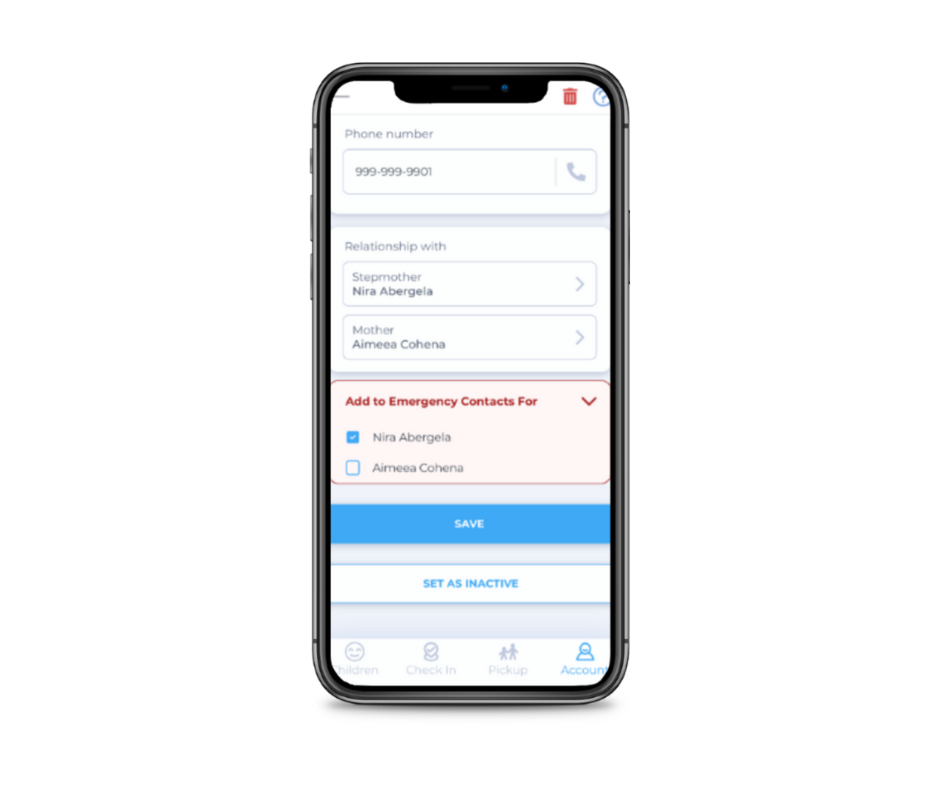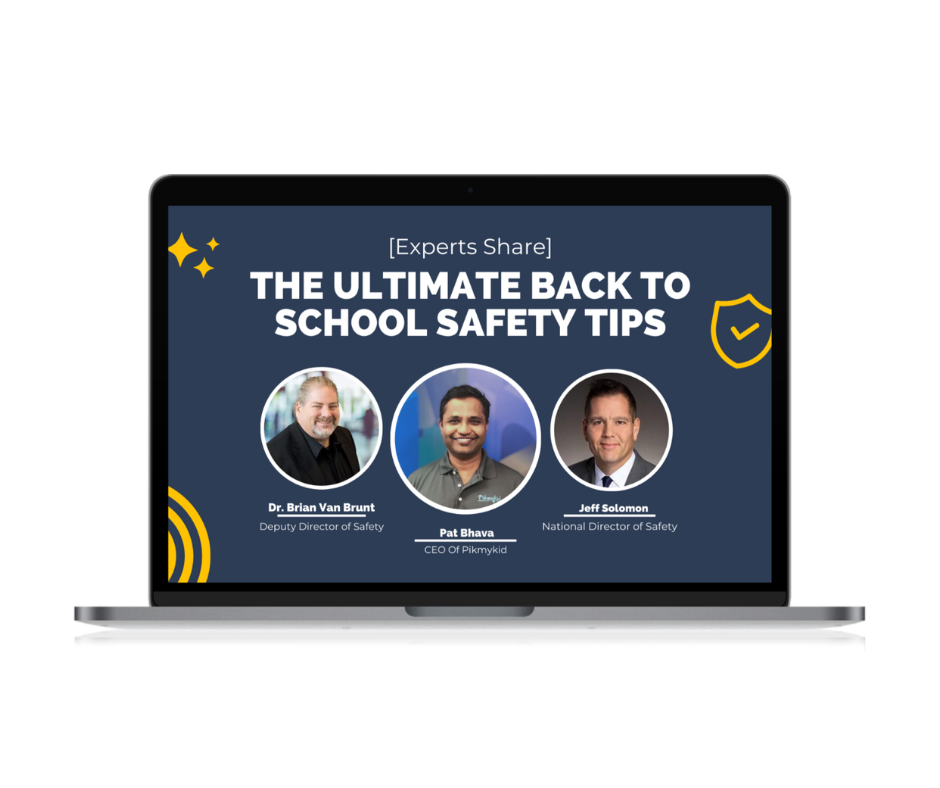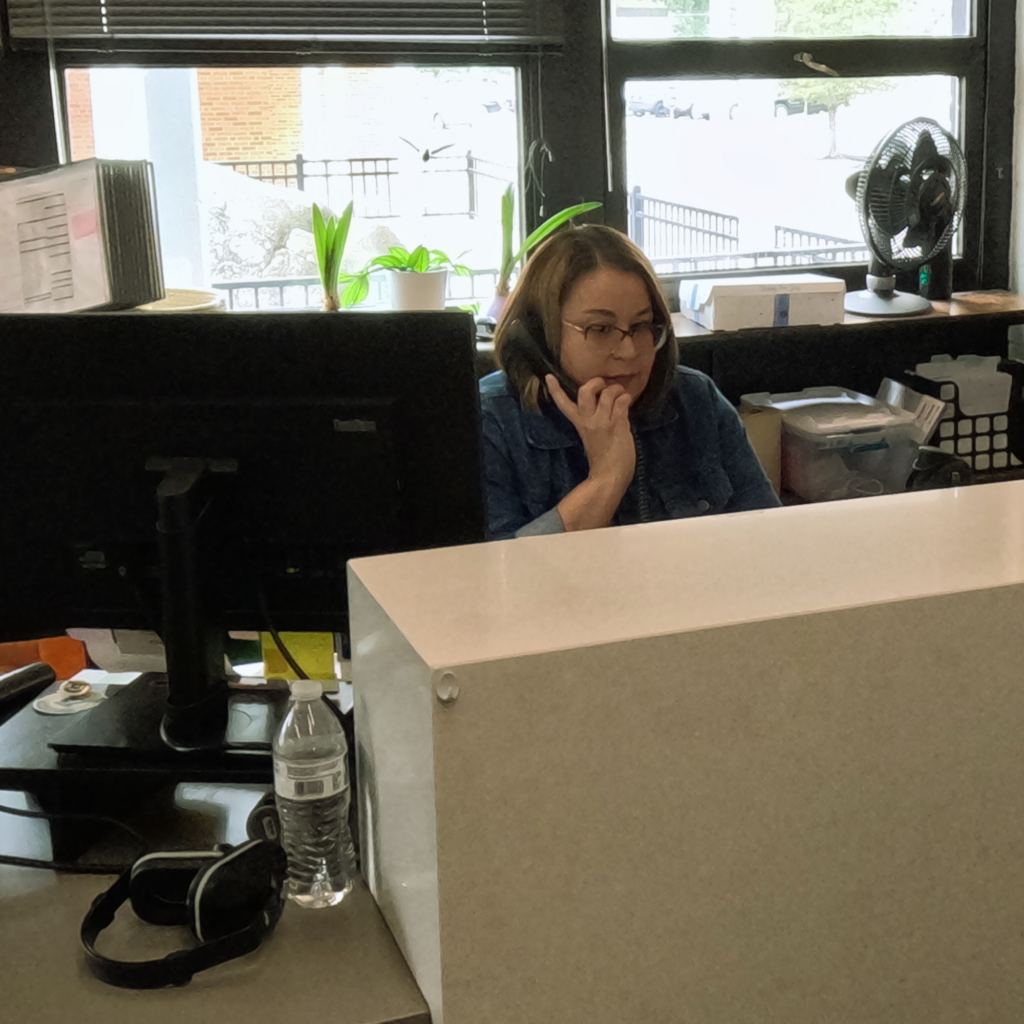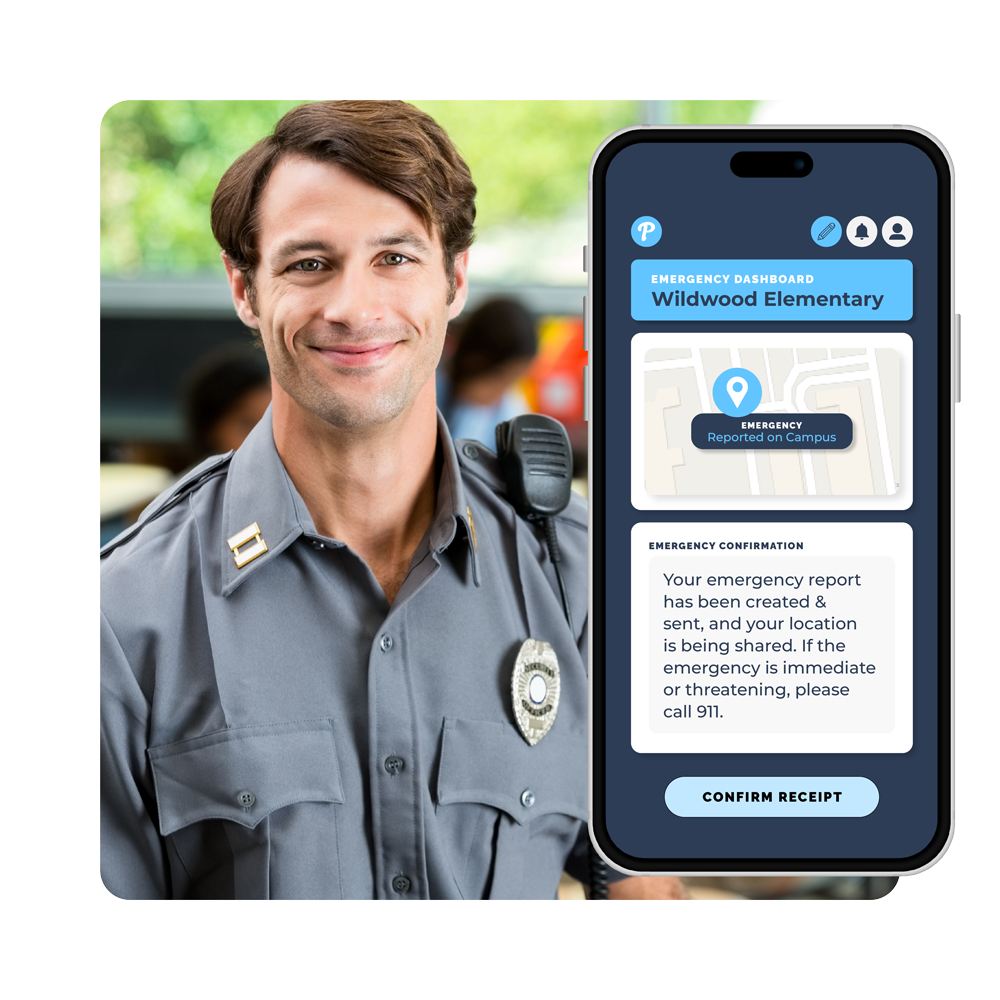There are multiple things you can do before an emergency ever occurs at your school.
The best way to prevent a school safety problem is by being proactive. This blog article will walk you through the right tools to have for a reliable school safety plan.
How do you begin to plan for a school safety incident?
The first step in creating a school safety plan is to identify the possible risks at your school or district. These risks could include medical emergencies, wildlife on campus, extreme weather, fire, intruders, and more.

You should establish a security committee who can meet, assess these risks, and develop protocols for responding to an emergency situation. Additionally, consider inviting parents, teachers, and students to participate in the planning process.
In addition to your established safety protocols and plans, we recommend that you have a crisis management team at your school. This team should consist of an assortment of personnel, including high-ranking members from the administration and security divisions as well as other skilled faculty members that can help you make those tough decisions when it comes to school safety.
The following materials offer some ideas on how you can improve your school’s safety plan to better protect the students entrusted to your care.
1. Involve parents in school safety planning.
Parents play a vital role in the safety of our schools. Why not involve them? Let them know how they can assist you and your staff in keeping students as safe as possible.

Invite parents to meet with teachers and school administrators before school starts to coordinate ways that their students can learn to grow in responsibility for their own safety.
2. Put your plan in writing!
This is called an all-hazards plan, and it needs to include what you will do if there is an emergency or intruder on campus.
Once it’s completed, make sure it is stored in a central location online and available to all staff. If you’re a Pikmykid customer, we recommend keeping it stored in your Pikmykid resource library.

3. Train your staff and faculty
Hold regular training sessions for faculty and staff, so they are prepared if an emergency situation arises.
When you’re planning for school safety, make sure that everyone knows what to do when an emergency occurs. Your students, teachers, administrative staff, and security team should all be aware of what they are supposed to do in various crisis situations.
4. Review your safety plan with students at least once per quarter.
Go through your safety plan, allowing students the opportunity to ask questions and practice scenarios when appropriate. You should do this with all students, not just those who have special needs.

5. Know how to use your fire alarm!
Make sure staff and students know where the fire alarms are located, how to trigger them, and what happens when the fire alarm goes off.
6. Communicate what to do if there’s an intruder on campus.
Always try to take a moment and ask yourself, “how will this sound over the P.A.? Are the words I’m about to say going to instill fear in my students?” If you would not want your own kid to hear what you’re about to say – don’t say it!
If an intruder enters the school:
- Keep students calm.
- If they are out in the halls, return them to their classrooms immediately.
- Check that classroom doors are locked. If your door does not lock automatically, place something heavy against it, like a desk.
- Instruct students to stay low and quiet.
- Turn off all radios and cell phones that could make sounds or vibrate.
- Instruct students not to open classroom doors.
- Turn off lights to make it more difficult for the intruder to see inside the rooms.
- Keep students away from all windows and doors even if they look out and don’t see anything suspicious. Do not let them stand up to look out the window.
- Keep noise to a minimum so that you will not attract the intruder’s attention or accidentally trigger an alarm without knowing it.
- Remain calm and quiet. Do not leave students alone.
7. Leverage an emergency alert system.
Emergency alert systems or silent panic alarms can save lives by quickly alerting school authorities and first responders to an emergency.
Ideally, a school emergency alert system will:
- Be accessible anywhere on campus – whether in the classroom, bathroom, basketball court, or lunchroom.
- Contact the needed help depending on the emergency, such as the principal, school resource officer, school nurse, and/or first responders.
- Share the location of the emergency, so help gets to the correct location.
- Provides emergency instructions specific to the emergency reported.
Need an emergency alert system? Check out Pikmykid’s all-in-one dismissal and safety platform here.
8. Be prepared with students’ emergency contact information.

Make sure you have updated emergency contact information for each student. Ideally, this information would be available digitally, so you don’t have to grab a file of paper emergency contact sheets during the emergency and manually find each student’s information.
Pikmykid customers can have parents use their app to update their emergency contact information throughout the year, which syncs instantly with their Pikmykid school portal.
9. Practice your emergency reunification plan
Many schools fail to plan for what happens AFTER an emergency – that is how to safely reunite students with their families. Make sure you don’t skip this important piece of your safety plan.
In your plan, have a designated evacuation place that all staff and students can go to in any given situation. By having this plan already established, none of your students will be left wandering alone in the halls, which could lead to an even more dangerous situation.
In addition to your evacuation location, there should be two additional locations identified in your plan: one for parent check-in and one for student/family reunification. By having three separate locations, you avoid students leaving unaccounted for.
Frequently Asked School Emergency Questions
What is a school safety plan?
A school safety plan is a written document used to keep students and teachers safe in various crisis situations. It outlines the procedures for responding to an outside threat or incident on your school’s campus. These procedures should include the process for evacuating students, sheltering-in-place, and emergency response protocol. In addition, your school safety plan should identify possible threats and train employees on how to respond to those threats.

What is an emergency reunification plan?
An emergency reunification plan is a protocol for safely and quickly reuniting students with their families after an emergency. This plan should include how to alert or communicate with guardians about the emergency, where they should go to pick up their kid, verify the guardian is an approved emergency contact, and document their safe reunification.
What is a school emergency alert system or silent panic alarm?
A school emergency alert system or school silent panic alarm is a system that immediately delivers emergency instructions and alerts first responders. The school alert system is often used for medical or active shooters, but some can be set up to handle any on-campus emergency, such as extreme weather, wildlife on campus, and other emergencies.
In conclusion, by evaluating your school safety plan and communicating with the community, you’ll be able to ensure everyone knows what to do to prevent and prepare for emergencies and everyday incidents. By working together, your school will be able to respond with swiftness and accuracy in order to reduce the number of mishaps.

Want to learn more school safety tips? Watch our instant replay webinar on school safety tips here.


